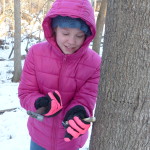
Kids get creative outside
“Let’s play outside!” For baby boomers, that was something we said and did every day. Driving slowly through neighborhoods was a must in those days because the yards and streets were literally full of kids. We played outside after school and on weekends, 365 days a year. Every day was a “play date.” No need for mom or dad to arrange one.
In today’s world, you can drive for miles through town and not see a single child. What changed? Three main factors are frequently cited as the reasons for this retreat from outdoors to indoors:
- High profile child abductions in the 80s and 90s.
- Video gaming and screen time.
- Organized sports and activities.
In the 80s and 90s, there was a handful of child abductions that became a part of the 24-hour news cycles, such as the Jacob Wetterling case. They gave parents the impression that these abductions were becoming more frequent, even epidemic So parents became reluctant to let their kids play outside. We now know, however, that for decades the number of stranger abductions of children has remained unchanged, according to readily available statistics, such as those from the Office of Juvenile Justice and Delinquency Prevention.
Video gaming and screen time are obvious to us all. When we do see kids in public, their noses are glued to their phones.
Organized sports and activities are great for keeping kids busy and healthy, and, at least for a short time, away from their phones. But there is a negative side. Kids and parents are overscheduled, driving from school to sports/lessons to fast food to more sports/lessons. Stress and burn out are among the many negative results.
So, what can be gained by having kids go outside and play?
- Solving the problem of squirrels raiding the feeder.
- Henry adds to his squirrel-proof wall.
- Development of creativity. Kids have to be imaginative to come up with their own games and play outside. A fallen tree becomes an airplane flying to China. A pile of snow becomes a fort. A rope tied between trees becomes a bridge over burning lava.
- The more the merrier and playing outside means kids learn, by trial and error, how to be friends, share ideas, solve problems and resolve conflict.
- Discovery and appreciation of the environment. Kids learn best through experience and an iPad doesn’t come close to helping a child learn about the outdoors like living in it does.
- Attention span. The Wiley Online Library reports that studies show that green outdoor spaces reduce ADHD symptoms in children.
How can we get our kids to play outside? We can’t just open the door and tell them to go outside and play. In two minutes, they’ll be coming back in saying they’re bored and want to do their screens and games.
So, here’s how to start:
- Go outside and play with them. Get them an idea (making a stick fort, playing touch football) and get them started. After a while, leave them to it and go back inside.
- Limit screen time. If they know they only have 30 minutes per day of screen time (phone, iPad, TV) and they’ve already burned that up, that eliminates the desire for screen time instead of playing outside.
- Let them get dirty and tell them it’s perfectly OK to do so.
- Give them tools for playing. A rope, an old bucket, a frisbee, a glider, a jar. Be creative yourself!
- Invite neighborhood friends over. The more the merrier.
- Let them use the hose on a hot day. Give them a watering can and have them “water the trees.”
- Don’t let the weather stop outside play. We live in the Upper Midwest and we know how to dress for cold weather. Playing outside in winter is a blast for kids, and it leads to things like hot chocolate and hot baths – which mean more socialization, family time and less screen time.
- Teach your kids “new” games – the kind we used to play all the time outside: Kick the can, tug of rope, flashlight tag, frozen tag.
- Set a limit. Not a maximum limit, a minimum. It was the other way around when we were kids. We’d head out to play on a Saturday and mom would say to be back before dark. (I’m not making this up). But for kids who are learning how to play on their own outside, try setting the minimum time – thirty minutes or so to start. They’ll come back to the door after five minutes saying they don’t know what to do. Send ‘em back out and let them know that only they can solve that problem. And guess what? They will!
- Go outside and play with the kids for a while.
- Kids can learn to exuberantly embrace the outdoors.
- Savannah taps a homemade spile into a backyard maple.
Kids’ imaginations are powerful and given the chance, they will use them to create their own outside adventures. Pretty soon you may just find yourself yelling out the door that it’s time to come in for dinner and hearing, “Aw, Mom!! Just five more minutes!”






